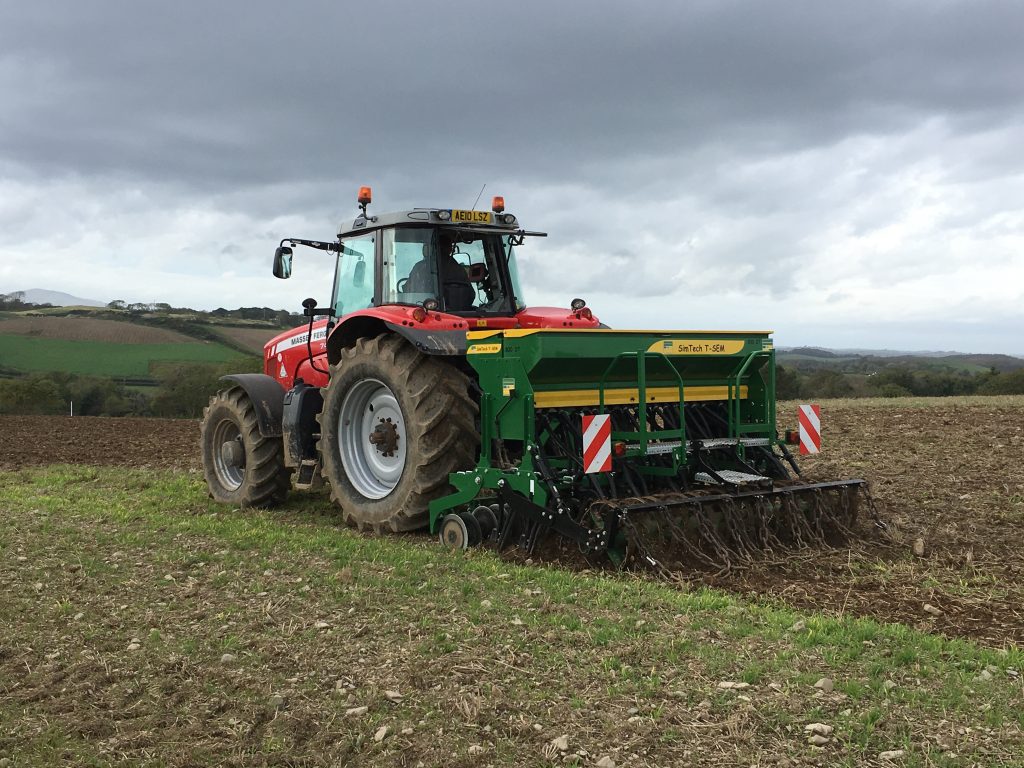Sward improvement – make the investment work on your farm
July 10, 2020
CAFRE Northern Team Beef and Sheep Advisers.
Reseeding 10% of the farm annually is a target that farmers should aim to achieve to increase productivity from their grassland. In order to determine if a reseed is required you should first consider the objective of the field in question. Is it to improve quality of the silage or grazing area, increase utilisation or simply to grow more grass? If the answer is yes then reseeding will produce an improvement in the quality of the grass swards on your farm leading to increased palatability and digestibility, enable higher stocking rates to be carried and enhance silage yields.
Grass is the cheapest form of feed for our livestock at approximately a quarter of the cost of concentrate on a p/kg DM basis. Reseeding will be a cost effective investment but only when carried out successfully as it will increase the amount of grass grown in a new sward v’s an old ley and therefore has the potential to reduce reliance on concentrate feed within an enterprise.

The most productive swards for intensive grassland conditions include perennial ryegrass (PRG) and white clover. In these systems it is important that there is little rejection and wastage of grass. The aim should be to improve the sward composition so that most of the herbage on offer is readily eaten. Perennial ryegrass is the most important and widely used species in Northern Ireland seed mixtures as they have rapid establishment and a high nutritive value. If grass species in the sward are correctly identified then sward composition can be assessed and if there is less than 40% PRG then sowing out is a feasible option. The presence of broad leaved weeds in the sward should also be considered. Swards that are dominant in ryegrasses do not occur naturally and must be sown. Consider soil fertility level, field use, desired persistency and productivity when selecting a seed mix.
| Method | Advantages | Disadvantages |
| Ploughing | -Can bury pest and weed problems, e.g. rushes -Can alleviate compaction issues -Most reliable method | -Can bury pest and weed problems, e.g. rushes -Can alleviate compaction issues -Most reliable method -Can disturb weeds that have been dormant in seedbed -Can push nutrient rich soil down from the surface -Most expensive option |
| Minimum Cultivation | -Cheaper than ploughing -Fertile soil remains at surface | -Decaying trash from field can release organic acids to the soil -Longer time required in field to achieve even seedbed |
| Direct Drilling | -Maintains existing sward -Cheapest option available -No soil structure disturbance | -Can be challenging to establish new seed -Not suitable for all ground types |
Selecting a grass seed mixture
Selecting a grass seed mixture should be carried on an individual farm basis. A number of questions should be asked prior to selecting a mix. What is the planned use of the field being reseeded? What is the soil type? How much fertiliser do I plan to spread on this ground?
If the field is for silage, look for varieties with traits for high D-value and dry matter yield. Remember that heading dates approximately 10 days after your planned cutting date are required to ensure you achieve maximum silage quality. A close range of less than 7 days between the heading dates of the varieties within the mixture will allow for better management of your sward.
Diploid varieties are predominately for increased ground cover while tetraploids have a tall growth pattern and can be more open on wetter soils.
The management of your sward post sowing will determine the inclusion of clover. Clover safe post emergence sprays will be required or alternatively clover can be stitched in 6 weeks after spraying.
If carrying out sward rejuvenation methods such as stitching in, increase the proportion of tetraploid in the grass mix as the bigger seed is more aggressive while establishing in the existing sward.
Always use the Recommended Grass Clover Lists (RGCL) which includes 19 varieties produced by the DAERA funded AFBI grass breeding programme at Loughgall. These grasses have been bred and trialed under Northern Ireland environmental conditions and information such as average yield potential, maturity, spring growth and persistence is available.
Post-sowing
Careful management of the reseed post sowing is vital for the establishment of a successful new sward. Adequate nutrients in terms of N,P and K along with sufficient moisture will ensure good growth and once established grazing with light cattle or sheep will encourage tillering of the grass to thicken the sward and give a good establishment. In good reseeds there can be up to 10,000 tillers/square metre.
The threat from weeds needs to be carefully monitored with targeted spraying necessary if a specific problem arises. However precise fertiliser application and selective grazing should help the new grass compete with any weeds and reduce the need for herbicide treatment.
Summary
- Target 10% of grass platform for reseeding on an annual basis;
- Assess which fields need to be reseeded within your farm;
- Complete a soil analysis to assess nutrient requirements;
- Choose a cultivation method that best suits the land type;
- Select an appropriate grass seed mixture;
- Always use the recommended grass/clover lists;
- Careful management of the reseed post sowing is vital.
